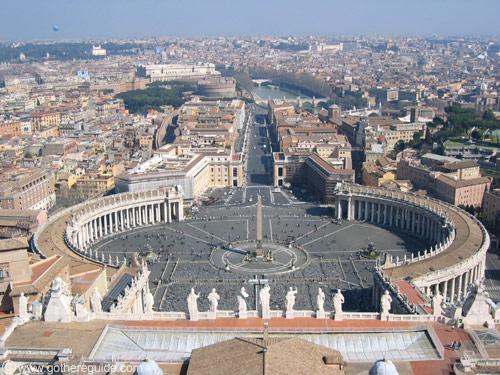Monday, 21 April 2014
Cults, Sects, Denominations, Church
Posted by
Supertradmum
Christ established an institution on purpose. This institution is the one, holy, Catholic and apostolic Church.
The Church is universal, not confined to any small or large group of people, such as a deviant group or national church.
Schismatic religions frequently show the characteristics of cults. One of the things I have been concerned about recently has been the increasing cultic feel to some TLM groupings. Of course, other groupings, such as the Pius V or Old Catholics, which have separated themselves from Rome, are obvious deviant groupings.
But, some of the characteristics of cults seem to be seeping into some TLM communities.
The movement into cultic behavior proves to be extremely dangerous, not only to the Church at large, but to the individual soul.
A person who falls into cultic thought has separated themselves from what Christ established.
Let us be clear from the start of this discussion, that all Protestant denominations are heretical. To equate Protestant "churches" with the Catholic Church reveals a naivete which can cause a person to compromise one's conscience. The false ecumenism of so many liberals in the Catholic Church has glossed over the horrible denials of truth in the Protestant denominations.
A denomination may split off into a sect. Some people define denominations as sects, but for my purposes in explaining problems of splinter groups, I see a sect as a subgroup of a denomination. For example, the Bruderhof is a sect, a smaller offshoot of the larger Hutterite grouping, and the larger set of Anabaptists.
So, one sees, a denomination or a heretical "church, such as the Anabaptists, or Hutterites, breaking into or inspiring other groups, such as the Bruderhof.
Size does not, however, determine whether something is a sect or denomination, which is why some people use both terms for the same description or definition of a splinter group. However, from a historical perspective, one can define the denominations of Protestants historically organized, such as the Lutherans or Calvinists, from the spin-off groupings.
Catholics define sects and denominations according to heretical beliefs. Therefore, a complete denial of the sacraments, as instituted by Christ, would be a step away from Lutheranism.
When does a sect become a cult? Or, when does a subgroup in a larger community become cultic?
Cults form from a desire for Gnosticism, an esoteric, hidden knowledge which no one else shares except those in the cult. Or, a cult can develop when a leader claims special knowledge and demands a complete separation from the larger "church", also imposing cultural laws which become legalistic.
Those who seek out cults may want the security of an outward, external form to reassure them of salvation; such are the many people who follow false seers, who want additional spiritual information regarding God, the Church, the future.
Obviously, anyone who teaches anything contrary to the Teaching Magisterium of the Church can create a cult.
I personally see the followers of Maria Divine Mercy, Vassula Ryden, the Pius V Society and the Old Catholics are not only heretical but cultic in their desire for hidden knowledge. I also suspect some people who follow Medjugorje of cultic thinking and behavior.
Once a group has been either condemned or warned against, Catholic endanger their immortal souls by following the new Gnosticism.
This tendency to Gnosticism is, in my opinion, creeping into the TLM groups in some areas.
Signs of cultic thinking in TLM groups may be listed:
1) an overemphasis on the personality of the priest;
2) an insistence on complete conformity of prayers not in keeping with the Catholic Church's guidelines or customs; in other words, not following the 1962 Missal and liturgical guidelines of that time;
3) a refusal of adults to take responsibility for their own salvation, relying on outward expressions, rather than inward conversions with the emphasis on outward expressions which even deviate from the liturgical rules from Rome;
4) an insistence of ignoring all teaching post-Vatican II and the ignoring of the reading of the encyclicals and Catechism of the Catholic Church;
5) a holier than thou attitude towards the last three popes, which indicate hubris and a lack of humility;
6) severe criticism of those who attend the NO, and worse, a denial that the NO is valid, which would be a heretical viewpoint;
7) the politicizing of the TLM by continually placing it in a certain party or an insistence on political uniformity among members of the TLM parish; in other words, a false ideal of Church and State; for example, the insistence on monarchism as the only valid organization of government;
8) the idea that the Mass is the only thing necessary for salvation;
9) the inability to discuss any position or issue concerning the group, as if the group itself held some sort of "infallibility" and cannot be criticized;
10) the refusal to get involved in parish activities outside the TLM;
11) anti-intellectualism -a sure sign of cultic thinking-and the continual insistence on experience;
12) a looking in on itself continually as a grouping, instead of a reaching out to others.
to be continued...
